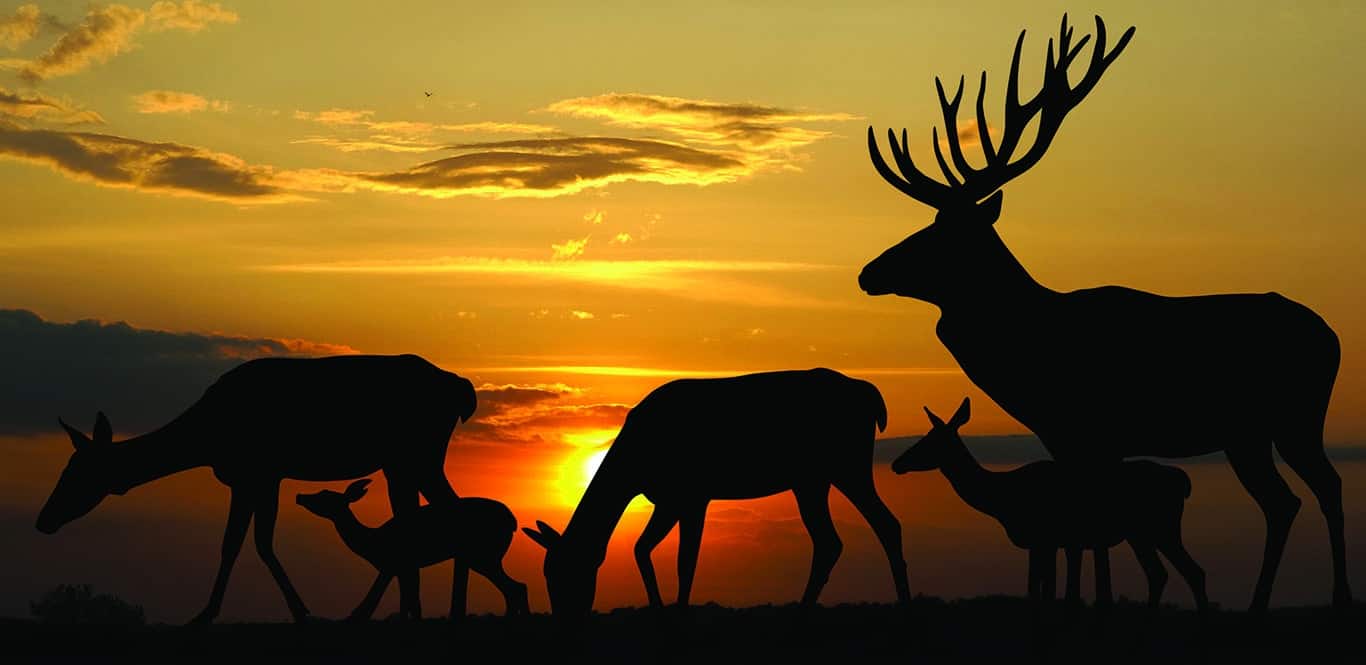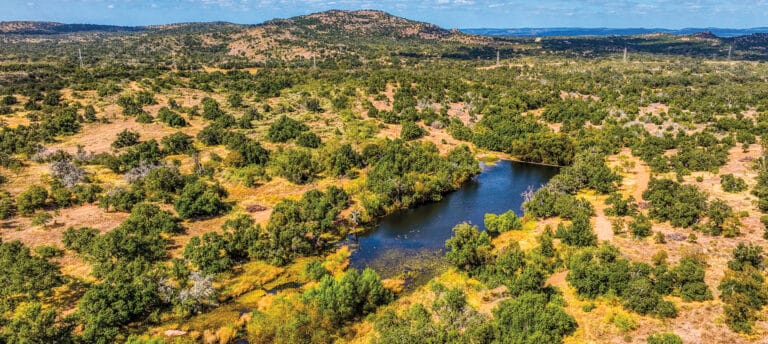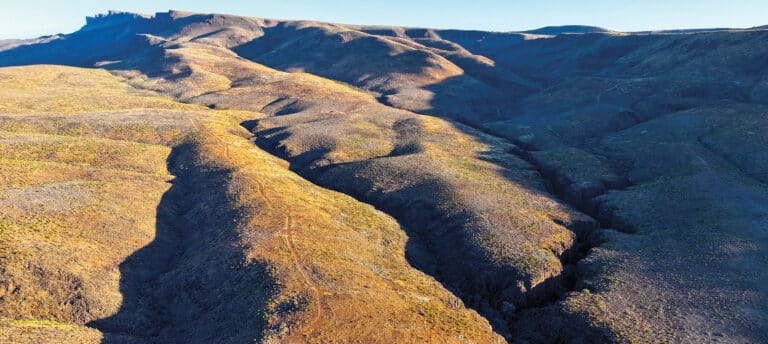A majority of our country’s citizens are urbanites and have no experience with nature and rural life. Although they lack knowledge of agricultural and wildlife production, an ever increasing number crusade for ending animal cruelty, food from natural and sustainable sources and banning firearms and hunting. These crusaders consider hunting as another act of animal cruelty and don’t make an attempt to understand the benefits to wildlife.
Ethical hunters and wildlife managers are good marksmen. They make clean kills which means that death is instant and the animal does not suffer. The use of guns in wildlife management is more humane than letting animals starve to death.
Aldo Leopold (1887–1948), considered the father of wildlife management in America, listed five tools used to destroy wildlife habitat and stated that these same tools can be used to restore and maintain it. Leopold’s list included the ax, cow, plow, fire and gun. In this article the gun as a deer management tool is discussed.
The gun is a required management tool for controlling deer herd size, so the population doesn’t increase beyond natural carrying capacity of the habitat. In addition to deer numbers, management of sex ratio and age structure may be important for productivity and heard health. For example, a proper sex ratio can result in earlier and shorter fawning periods, which can improve fawn survival.
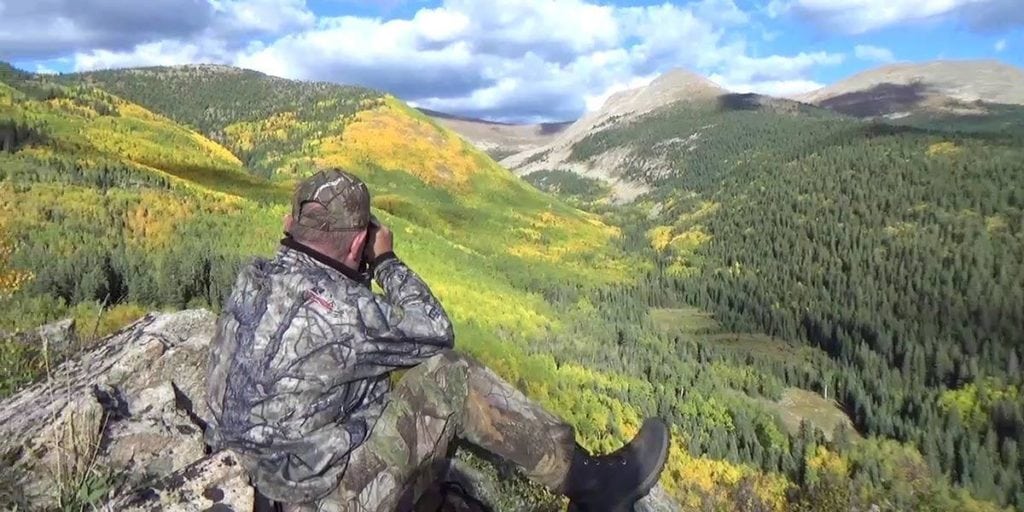
Why the gun is important
Importance of hunting in deer management is clearly defined by the National Shooting Sports Foundation and their explanations are presented in the following paragraphs:
“Some people oppose hunting because they feel that by preserving wildlife, it will increase. Wildlife, however, is a resource that cannot be stockpiled. If any annual overabundance is not harvested, nature often takes over in a cruel and harsh way. Weather, more than any other factor, often decides the fate of wildlife. Just as wildlife will flourish under ideal weather conditions—mild winters and bountiful springs—the opposite is true when seasons are harsh.”
“In a harsh winter, when oversized white-tailed deer herds deplete all available food, merciless death by slow starvation is inevitable. Predators attack the young and hunger-weakened stragglers while disease and parasites add to the toll. Most often, the end result is a weak, unhealthy herd with far fewer deer than would be present if hunters had taken a reasonable surplus in the fall during hunting season.”
“Research shows that a healthy white-tailed deer herd, reasonably sized to make the most of available habitat, can be reduced each year by as much as 40 percent with no ill effect on the future population. Hunters in most states rarely take more than 15 percent of the herds. If left alone, a white-tailed deer herd can double in size in only two years, quickly deplete available food supplies and face certain mass die-offs.”
“It is apparent that hunting is a useful part of today’s wise game management practices. By teaming habitat improvement with carefully regulated hunting seasons and bag limits, our professional conservationists ensure that hunters take only the surplus of wildlife populations.”
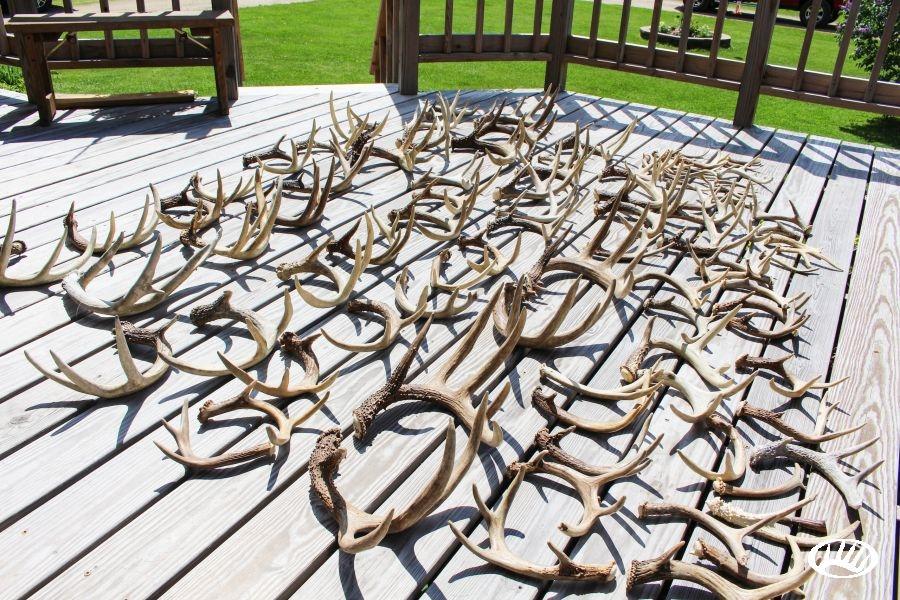
Harvest the right deer
Hunting is a form of culling and should be exercised in compliance with a management plan. A good reference for deer surveys and harvest strategies is the Texas Parks and Wildlife publication, White-Tailed Deer Management in the Rolling Plains of Texas, written by Calvin Richardson, Jim Lionberger and Gene Miller. Most of the following information is taken from this publication.
Deer management, like any other ranch enterprise, should be executed from a plan that contains a realistic, specific set of goals. The first item in the plan should be the reason you want to manage deer. In addition to maintaining herd health, what else do you want to accomplish? Do you want to enjoy watching healthy wildlife, provide hunting opportunities for the family, operate a hunting enterprise or a combination of these activities?
Management goals may include a desired deer density, a specific quality-class of bucks with details about antler and body size, and/or more subjective interests concerning recreational experience quality. Landowner goals should serve as a constant guide for every decision regarding harvest strategies and habitat management activities.
Collection and analysis of survey data and harvest records will help the manager determine overall status and condition of the deer herd. Baseline information, such as deer numbers, age structure, sex ratio, nutrition and productivity, allows a manager to make informed decisions and develop a harvest strategy that will help accomplish deer management goals. More importantly, harvest and survey data can be used to annually evaluate progress toward deer management goals and to adjust harvest strategies and other management practices.
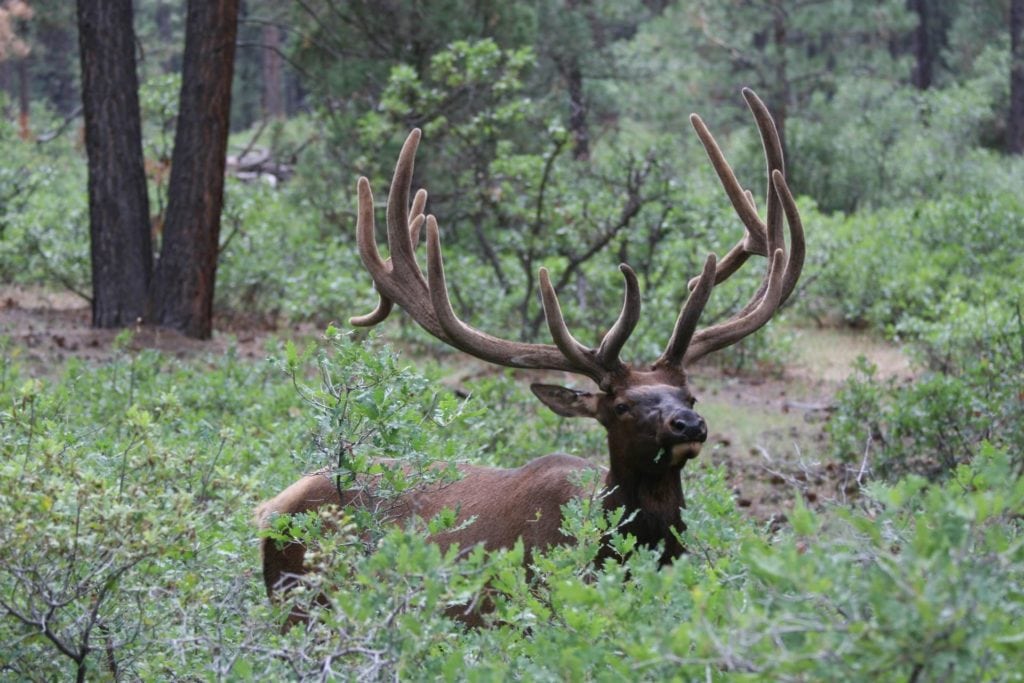
The number of deer that should be harvested each year depends upon carrying capacity of the habitat, fawn production, fawn survival, adult deer mortality and the buck-to-doe ratio. Low fawn survival through their first summer limits the number of deer that are recruited into the herd and may require a conservative harvest strategy to maintain herd productivity.
Many hunters are interested in harvesting mature bucks with quality antlers, which requires a hunting ranch manager to use a harvest strategy that allows bucks to reach 5½ and 6½ years of age. Managing for mature bucks typically involves harvesting only 15 to 20 percent of the buck segment annually. This strategy allows a conservative harvest of does at five to 15 percent in low deer density areas. In areas where deer numbers are approaching or have reached the habitat’s carrying capacity, a moderate to liberal doe harvest of 20 to 30 percent may be required.
Producing quality antlers depends not only on bucks reaching maturity but also on quality habitat management. This requires balancing the forage supply with deer and livestock numbers.
The buck-to-doe ratio of a deer herd is influenced by several factors, including the sex ratio of fawns at birth, natural mortality of males and females in all age classes, and hunting pressure on the buck and doe segments of the population. The percent of bucks in the fawn crop generally ranges from 40 to 60 percent. Appropriate buck-to-doe ratios in most management systems are approximately one to two in areas with relatively high deer numbers and approximately one to three in areas with fewer deer. These ratios will provide an optimum number of bucks, while maintaining an adequate number of does for herd replacements.
Ethical hunters and wildlife managers are good marksmen. They make clean kills which means that death is instant and the animal does not suffer. The use of guns in wildlife management is more humane than letting animals starve to death. Fees collected from hunters help the landowner pay habitat conservation costs.
The next time someone tells you that hunting is cruel, explain to them why deer herd size needs to be managed to avoid animal cruelty.
This article appears in the fall 2016 issue of TEXAS LAND magazine. Visit www.landmagazines.com to read more and subscribe to future issues of both LAND magazine and TEXAS LAND magazine.
